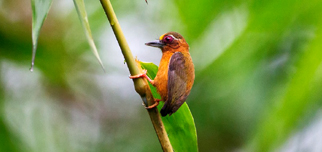Birding in Mishmi Hills

Birding Tours in Mishmi Hills
Mishmi Hills is in the Northeastern tip of India, in central Arunachal Pradesh. They are also a part of Shan-Malaysia plate. It is recorded that their height is 5140 ft. Comprising of both Dibang Valley and Lower Dibang Valley districts of Arunachal Pradesh.
Temperatures ranges from below 5°C in winter to 38°C in summer.
The Mishmi Hills area can be divided into two broad sections: the flood plains of the tributaries of the Brahmaputra River, and the Arunachal Himalayas consisting of snow-capped mountains, lower Himalayan ranges and the Shivalik hills. Steeply sloping landform, sub-tropical evergreen forest vegetation, and high rainfall characterize the area. Nowhere else in the Himalayas can one find so much pristine forest and intact mega-biodiversity. The natural vegetation here stretches in an unbroken sequence from the sub-tropics to the mountain tundra. Sub-tropical evergreen forests are the most severely altered in the Himalayas and the Mishmi area is one of the last strongholds for many species dependent on this forest type. Birding beyond Mayodia Pass can be also very
The Mishmi hills endemic Rusty-throated Wren-Babbler or Mishmi Wren-Babbler was rediscovered here in 2004, known previously from a mist net specimen collected in 1947 by Salim Ali and S.D. Ripley. There are about 680 bird species. Some of them are Sclater's Monal, Blyth's and Temmink's Tragopan, Chestnut-breasted Partridge, Rufous-necked Hornbill, pale-capped Pigeon, Ward's Trogon, dark-sided Thrush, Green and Purple Cochoa, Rusty-bellied and Gould's Shortwing, Beautiful Nuthatch, Rusty-throated and Wedge-billed Wren Babbler, Fire-tailed Myzornis, at least four Parrotbill species, Black-headed Greenfinch, Scarlet Finch and Grey-headed Bullfinch.
Latest Tour Packages















